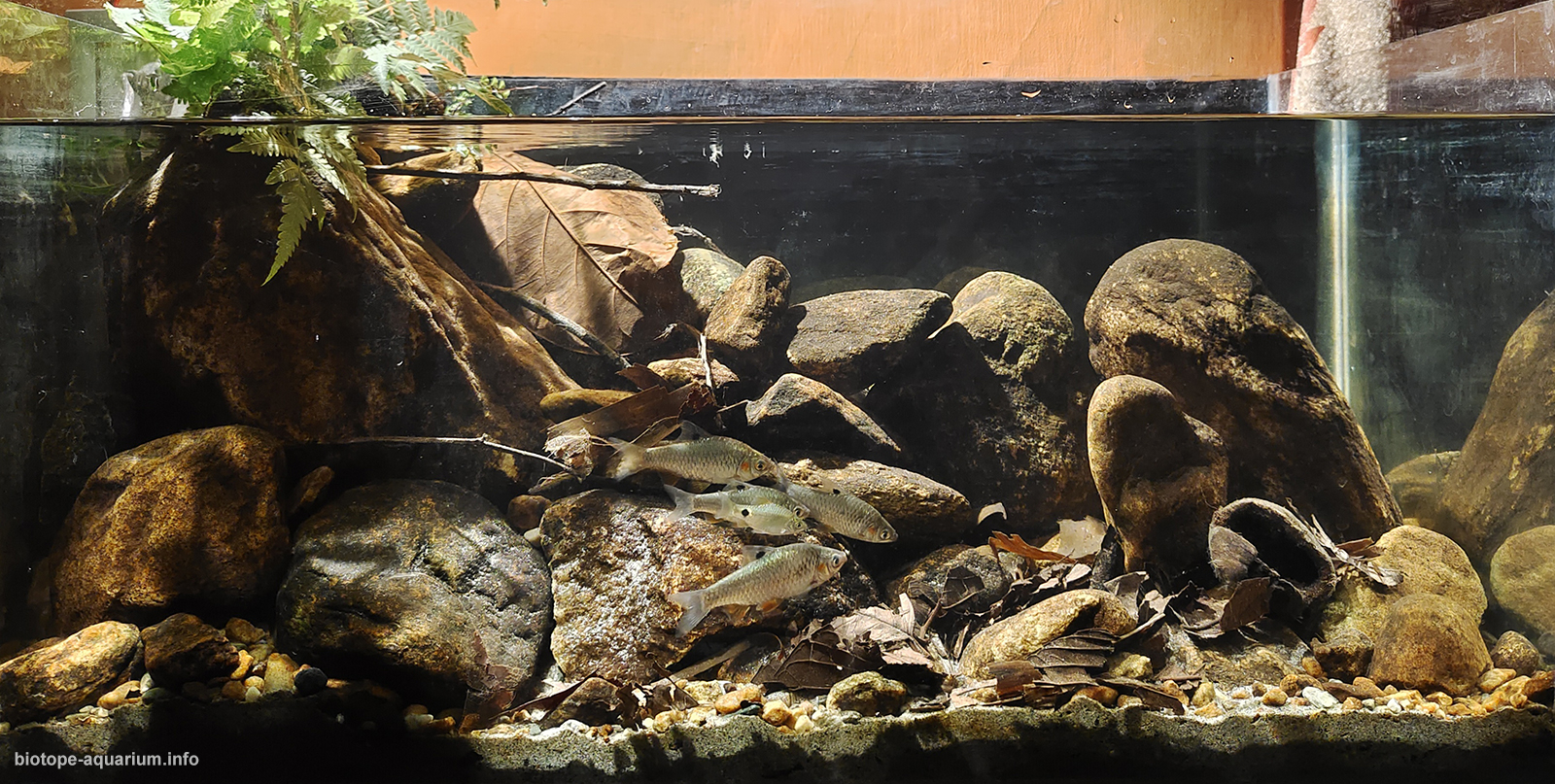Running stream originating from Chapanala Waterfall in Nagaon, Assam, India
_st place in Biotope Aquarium Design Contest 2022

Volume of aquarium: 50 liters
Dimensions of aquarium: 60x30x30
List of fishes: Macrobrachium assamensis, Noemacheilus zonatus, Puntius conchonius, Puntius sophore, filopaludina bengalensis
List of plants: None
Description of Decorations and Substrate: All the components used inside the aquarium are procured from the natural water source, the substrate is made of fine river sand and tiny stone gravel collected from there, the hardscape stone is also collected from there. The leaf litter used is mainly from dried teak tree, guava tree, jackfruit tree leaves , dried coconut shell and twigs.
Description of Equipment: sobo wp1200f, self made canister filter with cycle rate 600l/h, 6w warm white wall mount spot light
Water Parameters: temperature 22°C , tds 276, ph 6.7
Additional Info: the power filter is used to create waterflow from the corner of the rocks and the sponge is cleaned once in 2 week, since there is a lot of rock thus creating gaps hence 2 water change is done in a week at 20% and 50%. A bunch of fern plant is added to replicate the ferns that grow on stone cracks and banks.
Aquarium video:
Description of the Area Surrounding the Biotope: Champawati Kunda or the Chapnalla Falls is located in the Nagaon district of Assam, a North East state of India. The stream originates from the waterfall. there are two waterfalls that are located in the higher altitude and one of them creates a pond before flowing down, the banks are filled with lot of trees whose leaves and branches fall into the water, the water level rises during monsoon and people visit to the area gets shutdown, when the water level rises many big size fishes are observed in the steam. the stream speed narrows in the regions where water level is low .The sizes of stones where the current is high are more polish round and small in size.
Description of the Underwater Landscape of the Biotope: the bed of the stream is mostly made of stones, with a slippery film is felt on the rocks where the flow speed is slow.no plants are observed under water as its difficult for plant growth is rocky base and fast moving waters.
Description of the Habitat Parameters: Water has a tint of yellow color, the speed is fast in the deep regions of the stream and slows down in the shallow regions, temp is around 20~22 °C , pH varies from region to region from 6.7~6.9
List of Fishes and Invertebrates Occurring in the Nature Biotope: labeo dyocheilus, macrobrachium assamensis, Noemacheilus zonatus, Puntius conchonius, Puntius sophore, filopaludina bengalensis, channa punctatus
List of Plants Found in the Nature Biotope: None
Threats to the Ecology of the Biotope: This water body is chosen mainly for two reasons, firstly it is to showcase the variety of ornamental fish found in the region and educate people towards conserving them instead of just considering them as a food source. the second reason is the gradual decrease of some species due to destruction of the habitat by humans. Since the location is a picnic spot people loiter the area with a lot of plastic waste and pollute the water by throwing leftover food , cooking oil, washing utensil soap detergents. since leftover food gets dumped in the region fishes stay close to it as its a easy source of food but the also consume the oil and detergents causing poisoning and death. Since the area cant be restricted from being a picnic spot, the other alternative is to educate people to be more considerate towards safeguarding and protecting these water bodies.
Sources of Information:
Chetia, Awarlin & Das, Debangshu. (2020). Enumeration of Fresh Water Crab and Aquatic Fauna in Ranganadi River Basin, Assam.
https://www.researchgate.net/publication/351266914_Diversity_of_freshwater_molluscs_from_the_upper_Brahmaputra_Basin_Assam_India
